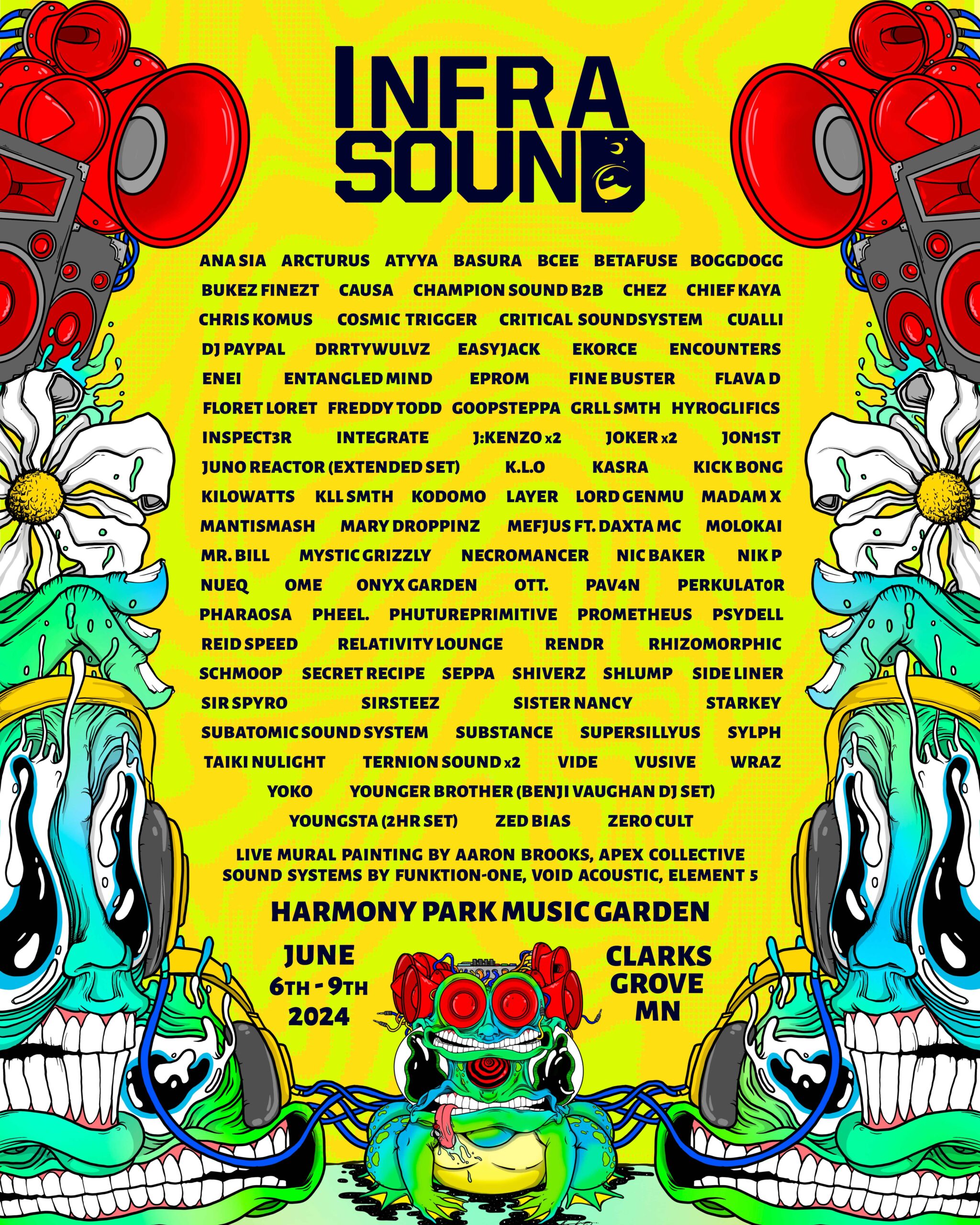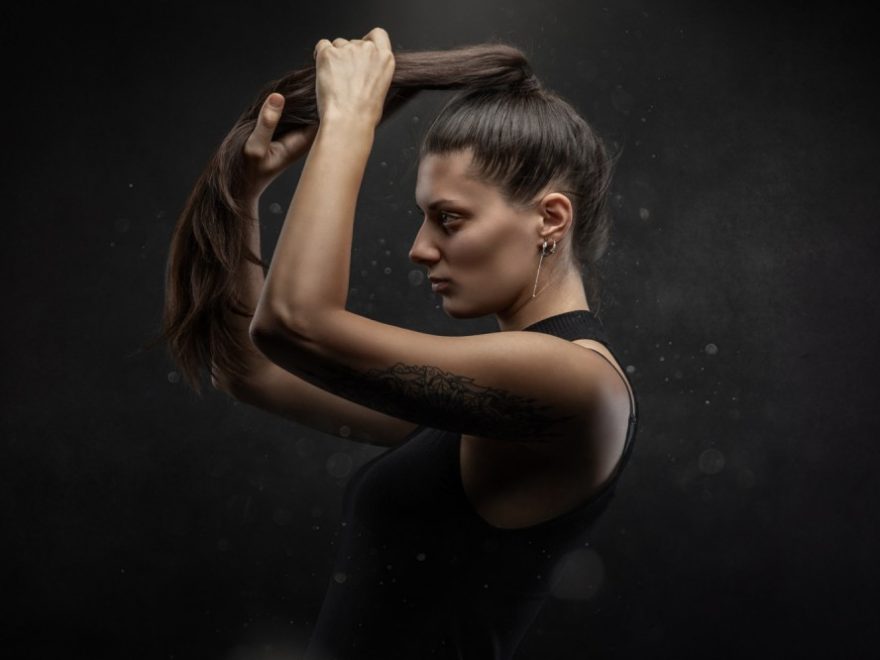A purveyor of lucid sounds and world bass music, the Toulouse-bred and Colorado-based producer, Chloé Herry, better known as CloZee, released her new LP, Neon Jungle, on July 3. The album drop comes after a lead-up of three shimmering singles, “Winter Is Coming,” “Air,” and the Kite String Tangle feature, “Us,” and offers a fuller exhibition of what CloZee is widely respected for in the electronic space: her ability to dissolve the geographic and regional barriers that exist in modern music through her use of textured synths, intellectual dexterity, serene melodies, and atmospheric auras.
In a recent interview, Dancing Astronaut caught up with CloZee to talk Neon Jungle and her approach to music production. Read the full interview below.
Why did you call the album Neon Jungle?
A lot of people tell me, “when I listen to your music, I feel like I’m in a forest or a jungle.” That’s very often where my inspiration comes from: landscapes, nature, organic shapes, and sounds. To me, the name Neon Jungle was a great description of my music and vision for this album, and the tour that will follow its release. It has both an electronic and organic feel, visually and aurally. For the “Neon Jungle Tour,” I had the idea of bringing a small jungle ([with] plants, leaves, [and] vines) to an indoor venue. My shows usually have a lot of lasers, lights, and visuals representing nature, so the name Neon Jungle came to mind.
Do you have a typical production process? If so, what is it?
Every track has a different process. I start with a blank project for every tune and just compose, inspired by whatever feelings I have at the moment, and the location [that] I am in. For example, “Neon Jungle” was made in Costa Rica, only with my headphones. The instrumental of “Us” was composed on the go during my 2019 tour in Australia. The full track with vocals was finished in my home studio in France. “Long Live The Chill,” featuring Sir Bishop, was originally an acoustic track, with only guitar.
What was your go-to MIDI controller for this project and why?
I mainly worked with Maschine as a MIDI controller. I love the pads. The fact you can change the scales, use the keyboard function, sample anything and make it a synth etc. Maschine is also what I use for my live sets and I always travel with it.
Was there any special VST that really took the production home?
I think Sylenth and Omnisphere, [but] it’s hard to choose. I also used a lot of Kontakt libraries for the worldly instruments, brass, orchestral ensembles, and voices. [Also,] Harmor, Sawer, Absynth, [and] Serum.
Do you have any pet peeves with your DAW?
For some reason, some VSTs are just crashing in FL Studio and I then lose the preset I was working on. So, whenever I find a great sound I immediately save the preset, because the next time I open the project, it might not be there anymore. [I’m] not sure if that’s the DAW or the original installation, but I couldn’t fix the problem. I buy all my plugins, [so I know] it has nothing to do with illegal plugins installation.
Which song on Neon Jungle took the longest to produce and why?
I think “Air.” I had to clean up a lot of the instrumental to make room for Sauvane’s voice. She sent me a lot of amazing different audio that I needed to choose from. I also spent a lot of time on the mix to keep the sound warm and soft, but still have a powerful bass and beat.
What was the most difficult sound to conquer on the project?
Still “Air,” [specifically] the main pluck synth. [I’m] not even sure [what] to call it, [but it’s] the one that appears at the beginning. I wanted it to sound very warm, organic, and calming but bouncy.
What are some production skills or methods that you have improved that have subsequently taken your production to the next level?
Since I have the Subpac and my Focal Studio monitors, my sound and mixdowns improved a lot. I never realized how much great monitors could improve sound. I hear things that I wouldn’t be able to hear before, [and] can correct [things that need correcting], and the Subpac makes all my mixes so much [more] proper in the low ends, which is as important as all the rest [of the parts of] my music.
Is there a certain producer’s sound or production technique that you admire and wish you could recreate yourself?
I’m a huge fan of Mazde’s music and sound. I think he’s the best out there. Tipper is also one of my influences in terms of sound design and sound engineering.
Do you have any unique studio habits?
I don’t think it’s unique, but I very often have muted videos playing in the background when I compose. This is super helpful to have a break from my DAW screen and the grid. Watching an inspiring video while listening to the song I’m working on helps me to put some distance [in between me and] the technical side. I can hear and feel the song way more, and hear what works and what doesn’t. It brings me more ideas as well.
What was the most memorable moment of Neon Jungle‘s making?
[It was when I was] producing “Perfect,” the last track of the album. I made that song for one of the most important people in my life. It was the most immediate composition of the album, because the main intentions and inspiration were very real. I sat down in the studio at midnight, knowing directly how I wanted it to sound and what I wanted to tell. At 6 a.m., I had pretty much [finished] the whole song. It took me only one more night to have the final version and finish the mix.
Are there any rising artists that you’re currently excited about?
Il:lo, Rome In Silver, Sumthin Sumthin, Klasey Jones, and Lil Fish, just to name a few.
Are there any causes you care about at the moment?
The National Association for the Advancement of Colored People, Black Lives Matter, and The Fund for Global Human Rights.
What is next for CloZee?
More livestreams and hopefully some festivals before the end of the year [or] whenever we can safely party again, [as well as] a Neon Jungle remix album [and an accompanying tour].
Featured image: Pierre Beteille






